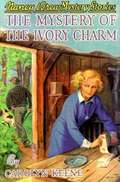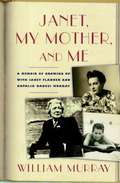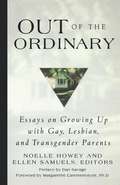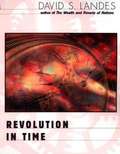- Table View
- List View
Small Groups in Counseling and Therapy: Process and Leadership
by Barbara W. PosthumaWhat are the characteristics of a cohesive group? What are the attributes of a good leader? What are the hidden agendas that govern certain group dynamics? Everyone needs a basic introduction into group dynamics in order to interact with the people in their personal and professional community. Small Groups is a practical hands-on approach to group dynamics. People in the various helping professions, as well as other professionals and lay citizens, will find in this book the appropriate conceptual knowledge and practical skills needed for effective small group leadership.<p> In addition to considering the theories of leadership and group process as well as the attributes and roles of leaders, the author applies the information in a practical step-by-step manner. He also introduces new programs on assertiveness and awareness. Topics include: group development, group dimensions, goals and norms, leadership attributes and techniques, ethics and multiculturalism, and self-help groups.
The Complete Idiot's Guide to 20th-Century History
by Alan AxelrodWell written history focuses on the twentieth century.
The Mountain Never Cries: A Mother's Diary
by Ann HoladayFor three days Ann Holaday waited at the mountain—Oregon’s Mount Hood—while rescuers searched for a missing climbing party of which her son Giles was a member. Miraculously, he survived three days in a snow cave. She had to wait again by his hospital bed while he fought for his life.
The Mystery of the Ivory Charm (Nancy Drew Mystery Stories #13)
by Carolyn KeeneNancy Drew determines whether an ivory elephant charm can really protects its wearer from harm when she investigates the involvement of a member of the Bengleton Circus in a mysterious scheme. This is the original 1935 edition. Beginning in the late 1950s, the Nancy Drew books were revised and condensed. This is a facsimile reproduction of the pre-revised version, as it was first published in 1935.
The Pianist
by Anthea Bell Wladyslaw SzpilmanDramatic story of a pianists survival of World War II in Poland.
This Is What Lesbian Looks Like: Dyke Activists Take On The 21st Century
by Kris KleindienstEssays.
Watermark
by Karin KallmakerTeresa Mandrell's first encounter with advertising executive Rayann Germaine begins badly and goes downhill from there. Within minutes of their meeting, Rayann dubs Teresa a "bumbling amateur." The event changes the course of Teresa's life -- she abandons the corporate world for what she hopes is a more satisfying career in Fine Arts Management. When budget cuts leave her without work, Teresa gets a job as a design artist in another firm, only to discover that the new department head is ... Rayann! But the difference in the woman's demeanor is so startling that Teresa can't believe her eyes. Although the woman she'd fought with had been insensitive and rude, she was full of fire and passion. This Rayann is cold and withdrawn. To Teresa's chagrin, the woman doesn't even remember their fight. In fact, the two fall easily into an increasingly harmonious work relationship. As they grow even closer, Teresa slowly uncovers layer after layer of Rayann's hurtand pain. When she at last arrives at the terrible truth, Teresa is left with one burning question: How can she turn Rayann's heart away from grief and lead her back toward life and love?
A Density Of Souls
by Christopher RiceSet in New Orleans; four high school friends torn apart by secrets and violence; five years later more secrets discovered.
A Man's Reach
by Elmer L. Andersen Lori SturdevantAutobiography of the popular Minnesota Governor in the 1950's.
Afterimage
by Helen HumphreysIN THE TURBULENT WORLD OF VICTORIAN ENGLAND, A MAID, MISTRESS, AND MASTER ARE DRAWN INTO A FATEFUL LOVE TRIANGLE.
Janet, My Mother, and Me: A Memoir of Growing Up With Janet Flanner and Natalia Danesi Murray
by Williamson MurrayJanet, My Mother, and Me is a charming, captivating memoir about a boy growing up in a household of two extraordinary women. William Murray was devoted to his mother, Natalia Danesi Murray, and to his mother's longtime lover, writer Janet Flanner. Even as a teenager, he accepted their unconventional relationship. His portrait of the two most important people in his life is unforgettable. Janet Flanner was already celebrated as the author of a new style of personal journalism for her "Letter from Paris" in The New Yorker when she met the Italian-born Natalia Murray on Fire Island, New York, in 1940. Their encounter, writes William Murray, was a "coup de foudre, a thunderbolt that instantly sent them rushing into each other's arms and forever altered their lives, as well as mine." Murray was already growing up in two cultures on different continents, in New York and Rome, when his mother's life changed so dramatically. He quickly accepted Flanner and the unusual household in which he found himself. (Natalia's mother, Mammina Ester, also lived with them in New York.) His memories of the women and of his own boyhood and adolescence are touching and often hilarious. Janet, My Mother, and Me offers a look at the world in which gay professional women moved in the decades before such relationships became more open and accepted. Murray's mother was a publishing executive and a broadcaster, and Murray, who originally hoped to become an opera singer and trained for that profession, eventually moved into the professions of both his mother and Flanner, becoming a novelist and then for many years an editor and writer at The New Yorker. This is an exuberant, warm, and often poignant memoir with a memorable cast of characters. Beguiling and unusual, it will remain vivid in readers' minds for years to come.
Just A Mom
by Betty DegeneresThe mother of comedian Ellen DeGeneres explains ways parents can help themselves and their homosexual children to deal with homosexuality.
Losing Matt Shepard: Life and Politics in the Aftermath of Anti-Gay Murder
by Beth LoffredaThe infamous murder in October 1998 of a twenty-one-year-old gay University of Wyoming student ignited a media frenzy. The crime resonated deeply with America's bitter history of violence against minorities, and something about Matt Shepard himself struck a chord with people across the nation. Although the details of the tragedy are familiar to most people, the complex and ever-shifting context of the killing is not. Losing Matt Shepard explores why the murder still haunts us -- and why it should. Beth Loffreda is uniquely qualified to write this account. As a professor new to the state and a straight faculty advisor to the campus Lesbian Gay Bisexual Transgender Association, she is both an insider and outsider to the events. She draws upon her own penetrating observations as well as dozens of interviews with students, townspeople, police officers, journalists, state politicians, activists, and gay and lesbian residents to make visible the knot of forces tied together by the fate of this young man. This book shows how the politics of sexuality -- perhaps now the most divisive issue in America's culture wars -- unfolds in a remote and sparsely populated area of the country. Loffreda brilliantly captures daily life since October 1998 in Laramie, Wyoming -- a community in a rural, poor, conservative, and breathtakingly beautiful state without a single gay bar or bookstore. Rather than focus only on Matt Shepard, she presents a full range of characters, including a panoply of locals (both gay and straight), the national gay activists who quickly descended on Laramie, the indefatigable homicide investigators, the often unreflective journalists of the national media, and even a cameo appearance by Peter, Paul, and Mary. Loffreda courses through a wide ambit of events: from the attempts by students and townspeople to rise above the anti-gay theatrics of defrocked minister Fred Phelps to the spontaneous, grassroots support for Matt at the university's homecoming parade, from the emotionally charged town council discussions about bias crimes legislation to the tireless efforts of the investigators to trace that grim night's trail of evidence. Charting these and many other events, Losing Matt Shepard not only recounts the typical responses to Matt's death but also the surprising stories of those whose lives were transformed but ignored in the media frenzy.
Men on Men 2000: Best New Gay Fiction for the Millennium (Men on Men, No #8)
by Karl Woelz David BergmanThis is the eighth book in a series of fiction anthologies
No More Heartburn
by Sherry A. RogersAQdvice by a physician about long-range techniques for avoiding heart-burn.
Out of the Ordinary: Essays on Growing Up with Gay, Lesbian, and Transgender Parents
by Noelle Howey Ellen SamuelsAn insightful and touching collection of real life experiences of children in the 1970 and 1980's before the level of acceptance for gay, lesbian and transgendered family's had developed. They each touch on their struggles and the secrecy they often had to keep along with the life lessons of human understanding and pride that often came from those challenges. The book also includes references and resources for additional reading and support.
Reading By Touch: Trials, Battles, and Discoveries
by Pamela LorimerHistory of reading for the blind.
Revolution in Time: Clocks and the Making of the Modern World (Revised and Enlarged Edition)
by David S. LandesMore than a decade after the publication of his dazzling book on the cultural, technological, and manufacturing aspects of measuring time and making clocks, David Landes has significantly expanded Revolution in Time. In a new preface and scores of updated passages, he explores new findings about medieval and early-modern time keeping, as well as contemporary hi-tech uses of the watch as mini-computer, cellular phone, and even radio receiver or television screen. While commenting on the latest research, Landes never loses his focus on the historical meaning of time and its many perceptions and uses, questions that go beyond history, that involve philosophers and possibly, theologians and literary folk as well.
The Danish Girl: A Novel
by David EbershoffAuthor's Note: This is a work of fiction loosely inspired by the case of Einar Wegener and his wife. I wrote the novel in order to explore the intimate space that defined their unusual marriage, and that space could only come to life through conjecture and speculation and the running of imagination. Some important facts about Einar's actual transformation lie in these pages, but the story, as recounted here with its details of place and time and language and interior life, is an invention of my imagination. In early 1931 when the news broke that a man had changed his gender, newspapers around the world ran accounts of Einar Wegener's remarkable life. (It is interesting to note that Lili Elbe herself leaked the story to the press, and wrote some stories about herself, including her own obituary, under a pseudonym.) Many of those articles were helpful in writing this novel, especially those in Politiken and other Danish newspapers. Another indispensable source was Lili Elbe's diaries and correspondence, which Niels Hoyer edited and published as Man Into Woman. Those journal entries and letters provided critical factual details of Einar's evolution, especially regarding Lili's first visit to Wegener's studio, Einar's mysterious bleeding and physical decline, and his journey to and stay at the Dresden Municipal Women's Clinic. The passages in my book that deal with these incidents are especially indebted to Hoyer's assemblage of Lili Elbe's original words. Nonetheless, I have changed so many elements of Einar Wegener's story that the characters in these pages are entirely fictional. The reader should not look to this novel for very many biographical details of Einar Wegener's life, and no other character in the novel has any relation to an actual person, living or dead.
The Girls: Sappho Goes To Hollywood
by Diana MclellanMcLellan's investigative account of the lives of Hollywood's most glamorous and uninhibited goddesses plunges deep into the rich stew of love, money, and passion that was the dawn of the movie business. The Girls reveals an early marriage to a communist spy that Marlene Dietrich fought all her life to keep secret and unearths an equally shrouded fling between Dietrich and Greta Garbo as starlets in Berlin. From the complex love life of the elegant Mercedes de Acosta through Isadora Duncan and Tallulah Bankhead to Garbo's lover Salka Viertel, McLellan untangles a passionate skein of connections that stretches from the theater in New York through brazenly bisexual socialites deep into the heart of the film industry.







